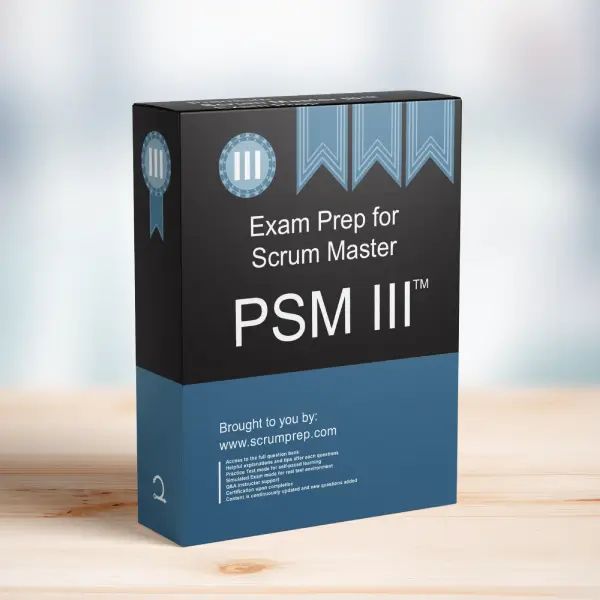The Importance of Product Vision and Sprint Goal in Scrum
Scrum is a lightweight framework that provides structure for teams to work efficiently and deliver value iteratively. While Scrum explicitly defines three artifacts—Product Backlog, Sprint Backlog, and Increment—it does not provide explicit artifacts for the product vision and Sprint Goal. However, both the product vision and the Sprint Goal play crucial roles in guiding the Scrum Team toward successful outcomes.
Exam Question
Scrum has no explicit artifacts for the product vision and a Sprint Goal. Yet, they are important. How would you explain their importance?
Explanation
Product Vision
- Guiding Long-Term Direction: The product vision is a clear and inspiring statement that describes the ultimate objective of the product. It provides a long-term direction and purpose for the Scrum Team and stakeholders. This vision serves as the “north star,” ensuring that all efforts align with the overarching goal of the product.
- Aligning Stakeholders and the Scrum Team: A well-articulated product vision helps align the expectations of stakeholders and the Scrum Team. It creates a shared understanding of what the product aims to achieve and why it is valuable. This alignment is crucial for making informed decisions throughout the product development process.
- Prioritizing Work Effectively: The product vision guides the Product Owner in ordering the Product Backlog. By understanding the vision, the Product Owner can prioritize Product Backlog items that contribute most significantly to realizing the vision. This ensures that the team is always working on the most valuable features.
Sprint Goal
- Providing Focus and Purpose: The Sprint Goal is a concise statement that defines the objective of the Sprint. It provides focus and purpose to the Scrum Team by outlining what they are collectively trying to achieve during the Sprint. The Sprint Goal helps the team stay aligned and avoid distractions.
- Facilitating Empirical Process Control: Scrum is based on empiricism, which involves frequent inspection and adaptation. The Sprint Goal acts as a reference point for inspecting progress during the Sprint. It helps the team assess whether they are on track to achieve the goal and make necessary adjustments if needed.
- Enhancing Collaboration and Commitment: The Sprint Goal encourages collaboration among Developers. With a shared goal in mind, team members are more likely to help each other and make decisions that benefit the team as a whole. It also fosters a sense of commitment, as the team rallies around a common objective.
The Relationship Between Product Vision and Sprint Goal
- Alignment with the Long-Term Vision: The Sprint Goal serves as a short-term step towards achieving the long-term product vision. Each Sprint Goal should align with and contribute to the realization of the product vision. This alignment ensures that every Sprint moves the team closer to the ultimate objective.
- Consistent Value Delivery: By linking the Sprint Goal to the product vision, the Scrum Team ensures that the work done in each Sprint delivers consistent value towards the end goal. The Product Owner uses the product vision to prioritize the Product Backlog, and the Sprint Goal translates that priority into actionable steps within the Sprint.
- Focused Incremental Progress: The product vision provides the overall direction, while the Sprint Goal focuses the team’s efforts on specific outcomes within that direction. This relationship between the two allows for incremental progress that is both meaningful and aligned with the larger objectives of the product.
Relevance to the PSM III Exam
In the PSM III exam, a deep understanding of Scrum principles, including the implicit importance of artifacts like the product vision and Sprint Goal, is essential. Recognizing how these elements contribute to the success of a Scrum Team helps in applying Scrum effectively in various contexts.
Key Takeaways
- Product vision provides long-term direction, aligns stakeholders, and aids in prioritizing work.
- Sprint Goal offers focus, facilitates empirical process control, and enhances team collaboration and commitment.
- Alignment between the product vision and Sprint Goal ensures that each Sprint contributes meaningfully to the overall product vision.
Conclusion
While Scrum does not define explicit artifacts for the product vision and Sprint Goal, their importance cannot be overstated. The product vision sets the direction for the entire project, while the Sprint Goal provides focus for each Sprint. Together, they ensure that the Scrum Team remains aligned with the desired outcomes and delivers value iteratively. For more insights into the Scrum framework and preparing for the PSM III exam, visit our Scrum Master PSM III™ Exam Prep.



